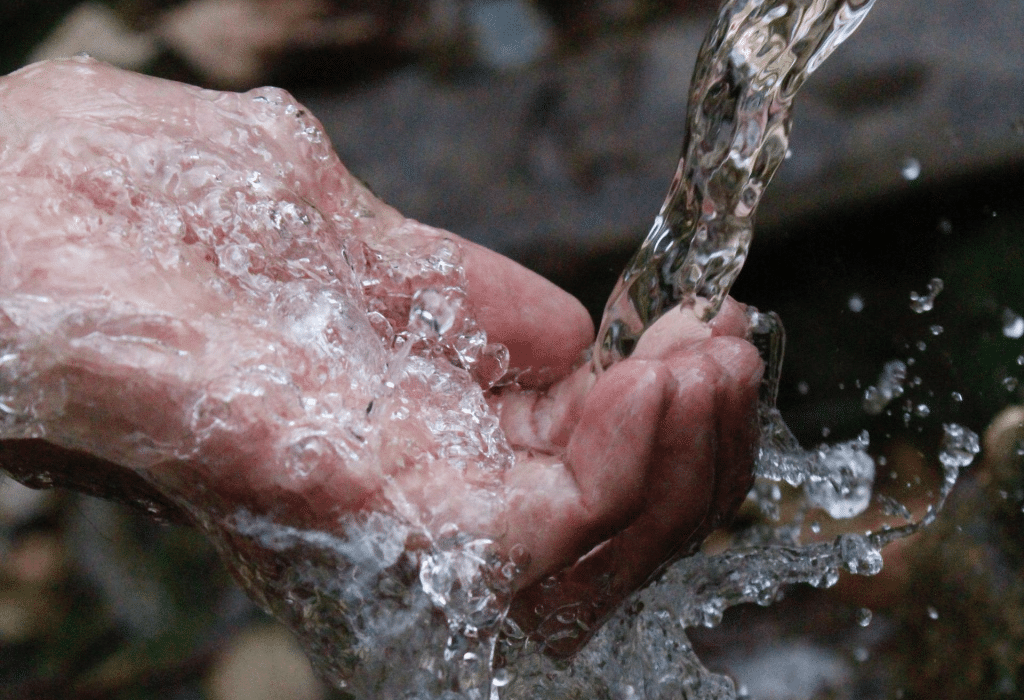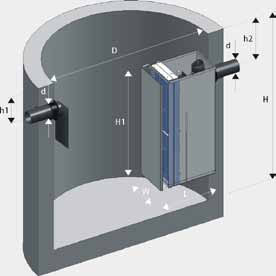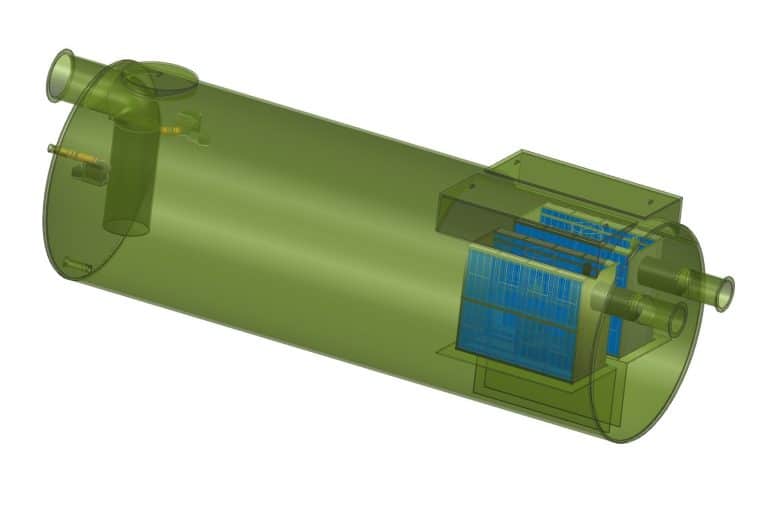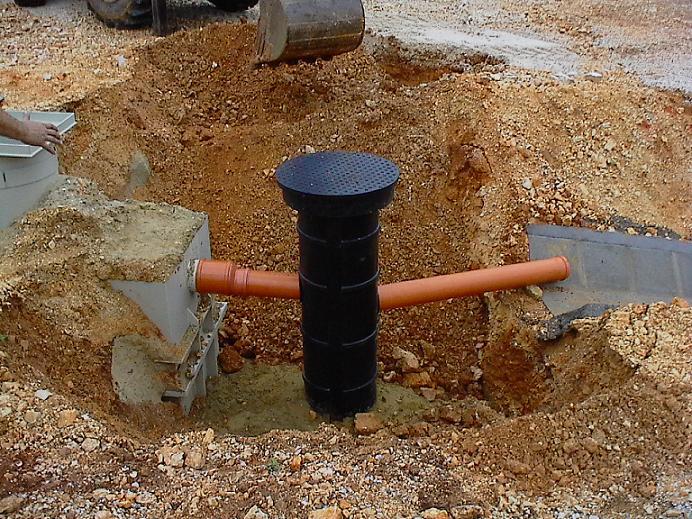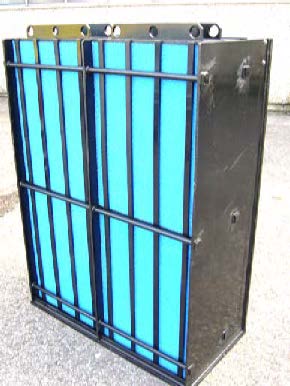Have you ever thought about What Industries Use Below Ground Oil Water Separators? or how different industries handle the important task of separating oil from water in their wastewater? Below ground oil water separators (OWS) play a key role in this process. They are used in many sectors, from cars to oil and gas. These systems help facilities meet strict environmental rules and support green operations by handling oily wastewater well.
In today’s world, where caring for the environment is more important than ever, it’s key to know which industries use below ground oil water separators. This knowledge helps companies aim for both efficiency and following the law.
Key Takeaways
- Below ground oil water separators are vital for wastewater treatment across multiple industrial sectors.
- Industries such as automotive, oil and gas, and construction frequently install these systems for regulatory compliance.
- Coalescing separators enhance separation efficiency, enabling smaller oil droplets to merge into larger ones.
- The global market for oil water separators is projected to grow significantly, highlighting their increasing importance.
- Technological advancements are improving the efficiency of oil water separators, leading to wider adoption.
- Compliance with environmental regulations influences industry demand for efficient oil water separation solutions.
Introduction to Below Ground Oil Water Separators
Below ground oil water separators are key in treating wastewater with oil and contaminants. They use gravity and coalescence to separate oil from water. This meets environmental standards. Industries like steel, mining, food processing, and heavy equipment washdown use them for wastewater management.
Definition and Functionality
Oil water separators handle wastewater with oil, emulsified oil, and solids. They have advanced features like clarified tank designs for high solids separation. Cross-linked polyethylene cone-bottom tanks with steep slopes improve the separation process.
This leads to cleaner effluent, reducing the load on treatment equipment. Knowing how oil water separators work is key for industries looking to cut costs and meet regulations.
Importance in Industrial Applications
Oil water separators are more than just for compliance; they help reduce environmental impact. They are vital for industries with oil-contaminated wastewater, lowering fines and legal penalties. Their durable design and modular flexibility offer adaptable solutions for various treatment needs.
For companies aiming for sustainability, investing in systems like Freytech’s enhances efficiency and eco-friendliness.
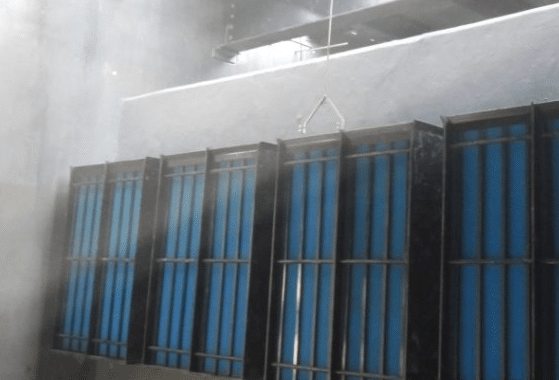
Industries That Utilize Oil Water Separators
Oil water separators are used in many sectors. Each industry has its own needs for managing oily wastewater. These tools are key for protecting the environment and following rules. Here are some main areas where they are used.
Automotive and Fleet Maintenance
Car service stations and fleet maintenance rely on oil water separators. They handle wastewater from washing and fixing cars. These separators keep harmful oil out of sewers.
They help businesses be green and follow strict rules.
Oil and Gas Industry
The oil and gas industry has big environmental challenges. Oil water separators are key for managing water from drilling. They help stop oil pollution during exploration and extraction.
Using these separators helps meet environmental rules. This protects our natural resources.
Construction and Heavy Equipment
Construction sites produce a lot of greasy water from washing equipment. Oil water separators are vital here. They treat runoff and help meet environmental standards.
Using these separators also makes construction more sustainable. It reduces the environmental impact of heavy machinery.
Regulatory Compliance and Environmental Standards
In the industrial world, following rules is key, mainly for water management. Companies must stick to strict rules on oil in water, like in North America. The limit is 10 Parts per Million (10 PPM). This rule helps keep water clean and protects nature, showing why below ground oil water separators are important.
Understanding North American Hydrocarbon Discharge Limits
Below ground oil water separators help meet strict oil in water rules. They are made to remove oil well, keeping water quality high. Following these rules helps businesses stay legal and protect the environment.
Importance of Meeting 10 PPM Standards
Keeping to the 10 PPM standard is big for companies that release wastewater. Oil water separators help by removing oil, avoiding fines and harm to the environment. Keeping them in good shape is key to following rules. This shows a company’s dedication to caring for the planet.
Benefits of Enhanced Coalescing Technology
Enhanced coalescing technology brings big improvements to oil water separators. It makes commercial oil water separators very good at separating oils from water. They can remove oils down to 5 PPM, which is very small.
This is key for industries that need to follow strict environmental rules. It helps them keep their wastewater clean and meet legal standards.
Achieving 5 PPM Separation Efficiency
Being able to separate oils down to 5 PPM is a big plus. It makes the water coming out of the system much cleaner. This is good for the environment and helps companies avoid fines.
Using this technology helps companies run more sustainably. It’s a win-win for both the environment and the business.
Ability to Separate Emulsified Oils
Another great thing about enhanced coalescing systems is how well they handle emulsified oils. These oils are hard to separate and can cause problems. But, advanced systems can handle them easily.
This means businesses can keep their wastewater cleaner and spend less on maintenance. It also means their equipment lasts longer and they meet today’s environmental standards.
Applications of Freytech Inc. Oil Water Separators
Freytech Inc. oil water separators work well in many industries. They are great at separating different types of hydrocarbons. This helps keep the environment safe and makes operations more efficient.
Separating Various Hydrocarbons
Freytech Inc. oil water separators can handle many substances. They can separate motor oil, diesel, and gasoline. This is very important for industries that need to meet strict environmental rules in North America.
Thanks to advanced technology, these separators can remove oil from water very effectively. They can get oil levels down to less than 5 PPM, even when the water starts with up to 2000 PPM of oil.
Custom Solutions for Specific Industries
Every industry has its own challenges with wastewater. Freytech Inc. provides custom solutions for different sectors like automotive, oil and gas, and construction. Their tailored industrial oil water separators help clients work better, reduce waste, and follow local environmental laws.
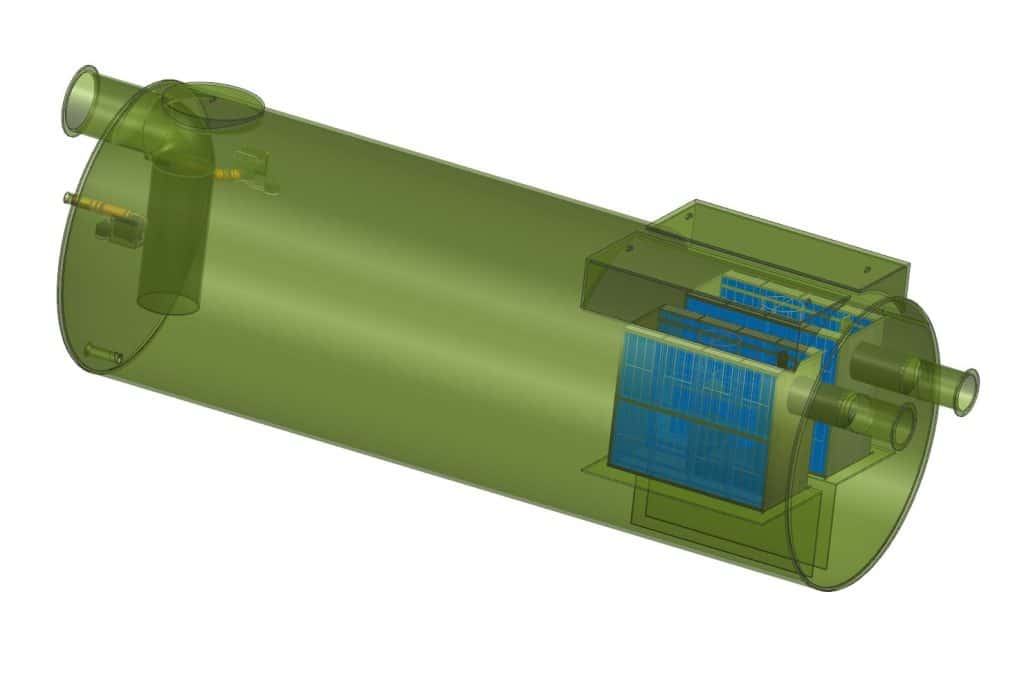
The Role of Optional Oil Skimmers
Optional oil skimmers are key to making oil water separators work better. They remove oil from the top of wastewater, ensuring it’s clean. These skimmers keep working to pull oil to the surface and move it to a container.
This process greatly boosts how well oil skimmers work. It allows for oil recovery with up to 99.7% purity. This makes the oil good enough to recycle.
How Oil Skimmers Function
Oil skimmers use different designs to separate oil from water efficiently. Models like belt skimmers and tube skimmers meet various needs. They handle different amounts of fluid and can quickly respond to spills.
The design of oil water separators helps these skimmers remove up to 90% of free oil. This is very helpful in industrial settings. It helps keep operations in line with rules and improves the quality of fluids used.
Benefits of 99.7% Pure Oil Separation
Separating oil to such a high purity has many benefits. It meets environmental rules and cuts costs for managing coolant and oil. Oil skimmers help extend the life of cutting fluids by up to 60%, saving money.
Also, better coolant quality means tools wear less, up to 30% less. This makes machining more efficient in many industries. With more focus on green practices, oil skimmers are essential for effective oil separation.
Maintenance and Longevity of Oil Water Separators
Keeping oil water separators in good shape is key to their long life and effectiveness. It’s important to choose systems that are easy to maintain.
Reusable Coalescing Media
Freytech’s oil water separators use reusable coalescing media. This media makes the separation process better. It can be spray washed to last longer, saving money on replacements.
These advanced parts help industries perform better and meet environmental rules.
Easy Maintenance for Long-Term Use
Regular checks and cleanings are vital for oil water separators. They are made to work with little downtime. This means they can keep operating smoothly even when being maintained.
Simple cleaning steps and sticking to a maintenance schedule are key. They keep the system reliable and manage wastewater well. This approach keeps operations clean and protects the environment.
Economic Benefits of Oil Water Separators
Oil water separators offer big economic gains to many industries. They play a key role in getting oil back from wastewater. This helps companies save money on disposal and can even make money from the oil they recover.
These systems make operations more efficient and boost profits. This shows how important oil water separators are for businesses.
Cost Savings Through Efficient Oil Recovery
Using oil water separators helps industries save money. They manage oil waste better, cutting down on harmful discharges. They also get valuable oil back, which can be reused or sold.
This efficient process lowers costs. It helps companies avoid buying new oil and reduces treatment expenses. This adds to their profits.
Recycling as a Valuable Commodity
Recycling is becoming more important as companies focus on sustainability. Oil water separators turn waste into something useful. This makes money while protecting the environment.
Seeing waste management as a chance for growth is key. Investing in these systems helps businesses and the planet. It’s a win-win for everyone involved.
Conclusion: The Impact of Efficient Oil Water Management
Efficient oil water management is key today, thanks to below ground oil water separators. They stop oil pollution in wastewater. They also help meet strict rules like MARPOL Annex I, which limits oil in bilge water to 15 ppm.
Advanced tech, like Freytech Inc.’s, makes these systems work better. This meets the rules more effectively.
Addressing Environmental Concerns
Below ground OWS do more than follow rules. They show a company’s care for the environment. As industries get checked more for their impact, using these systems is a must.
They help keep water clean, protecting nature. They also meet the need for green practices in work. This is important for a future where work and nature can live together.
In short, managing oil water well is more important than ever. It helps companies reduce their harm to the environment. The tech behind these separators lets industries meet new laws and public wishes. It shows that being efficient can also mean being kind to the planet.
